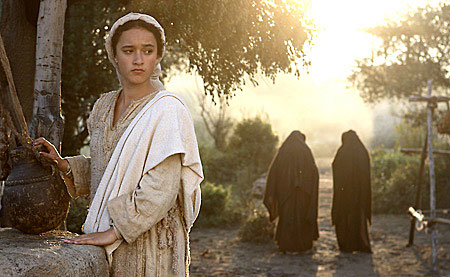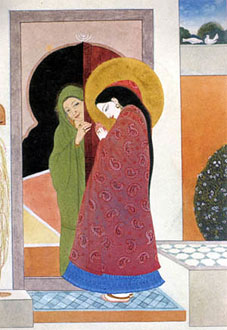Do Not Weep
The Unexpected Luck of Widows’ Sons
A guest post by Luke Welch.
I’ve been reading The Hobbit again, out loud, to our children, and this time through, one phrase in the first chapter caught my attention.
A guest post by Luke Welch.
I’ve been reading The Hobbit again, out loud, to our children, and this time through, one phrase in the first chapter caught my attention.

Mary’s song, like most songs in the Bible, seemed to me to contain mostly extraneous material. My modern mind couldn’t relate her words to the version of Christianity I was familiar with. I guess that’s because it was a version bereft of much understanding of the Old Testament.
Mary’s song seems to follow the matrix pattern. As such, it is a new Creation, and a new Tabernacle, (John 1:14, “dwelt” is literally “tabernacled”). It is the liturgical response of the bride to the promise of Covenant succession – the Covenant succession. This new generation was also regeneration.
 .
.
Victor left some comments on Mother of Invention which I think deserve a new post:
Hello Mike!
I’m a student of typology – endlessly fascinating endeavor! – and am not and never have been Catholic myself. I would like to comment on your point about the Ark of the Covenant. (I just noticed that MS Word wants to capitalize “ark of the covenant”!)
I understand that you recognize the many parallels between the “Visitation” account in Luke 1 and the Ark’s journey narrated in 2 Samuel 6. The cumulative effect of the many commonalities between them makes the typological connection impossible to be denied. I can’t help but recognize its validity.
OTOH, I understand that you’re trying to say that in the specific context of Luke 1 the Ark should be interpreted as an image of Christ, not of Mary.
I can see a link between the person of Christ and the Ark, but, in the precise context of Luke 1, it seems inescapable to me that the comparison is made between the Ark and the person of Mary the mother of Jesus. That’s the whole gist of the correlation between the stories of 2 Samuel and Luke.

——————————————————————————-
Rome has this whole nutty Oedipus thing going. They want the infantile security of Mary’s breast when God calls them to grow up, to be as individuals men worthy of a bride’s affections, and corporately a bride who adores only her Husband!
——————————————————————————-
Verifying typological connections is a tricky business. Like driving, it is not a skill but an art. This means that although there are certain rules to follow, above all of that there are situations where being steeped in the types and structures of the Bible is the only way to proceed with wisdom. James Jordan recently commented that any such exegesis should be carried out within the conversation of the church, and:
“The popular notion that everyone should be able to read and exegete the Bible equally, as a result of learning some so-called “science” of hermeneutics, is about as stupid as thinking everyone can write music like Bach and Beethoven by studying the rules of harmony and counterpoint; or that anyone can be a Shakespeare.”
I’m no Shakespeare, but James Jordan’s identification of the biblical “universals” and an explanation of biblical types has helped me enormously. The Bible matrix structure has also helped me enormously. They are typological “systematics.” It is this kind of grounding, like practising scales on a piano, that enables us to more easily identify abuses of typology — such as the claim that Mary is a “New Eve.” Dischordant notes can be used to great effect in great music, but it takes a practised musician to know when it is within a greater “harmony” and when it is not. This is beyond the basic scales.
“Then He said to the disciple, ‘Behold your mother!’ And from that hour that disciple took her to his own home.” John 19:27
Although they are spread throughout the four gospels, Jesus’ seven words from the cross are easy to put in chronological order. Once in order, they follow the themes of the annual Feasts.
At Firstfruits, Christ on the cross is Moses, mediating between heaven and earth. From the mountain, He transfers His legal responsibility for His mother to John.
He calls her Woman. At this point in the garden, the Lord married Adam to Eve. Of the seven elected Judges, this is Deborah, the warrior-mother. This step is always about the Covenant head lifted up to make a house for Greater Eve.
With this loving act, Christ prefigures the responsibility for the faithful remnant of Old Covenant Israel being transfered to the Apostles.
Interestingly, Revelation 18:7-8 follows the same structure. At the Firstfruits/’Woman/Bride’ step, Israel, who has rejected and killed her Messiah, says, “I am no widow.”